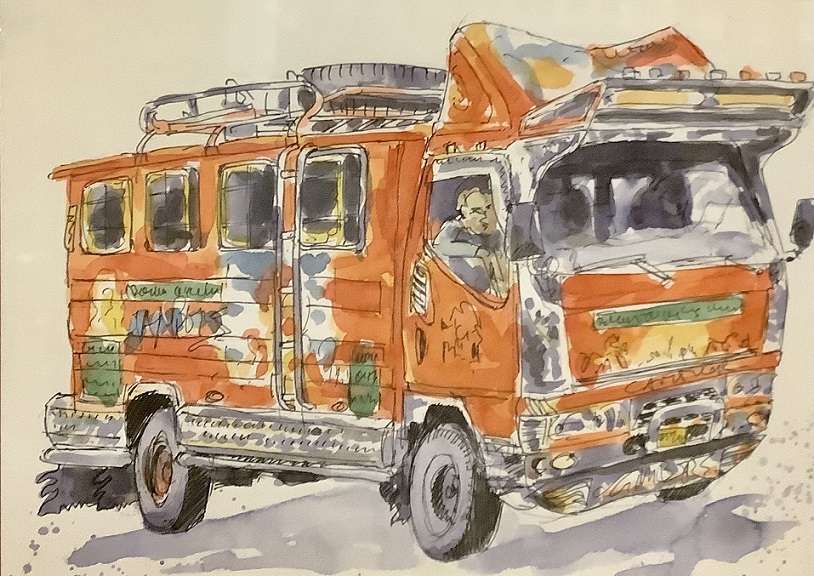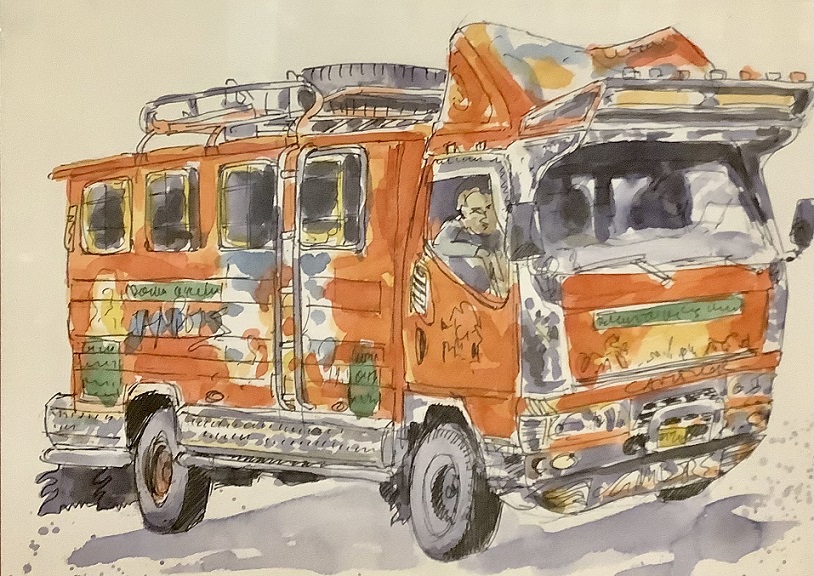
Photos by Babeth Lolarga
Aurelio Castro III is neither born nor raised in Baguio. He isn’t one of thousands of migrants in the city. And yet he has a deep affinity for it reflected in his current show of 40 works in pen and ink and watercolor at the basement of the Baguio Convention Center.
In quick strokes using his pen and ink first on the spot (“Pencil slows me down,” he said), followed by the color of the sky, then the shadows with the rest of the details following, he captures not only the unique architecture of a place and the lay of the land but also the spirit of place.
Called “Session: Sketchtour of Baguio Landscapes, Landmarks, People,” Castro does not romanticize the highland city or wax over-nostalgic about the many features that are lost to time, primarily the thick stands of pine trees that used to cover the hills. Instead, he shows how rapid urbanization manages to co-exist with the remaining patches of Nature.
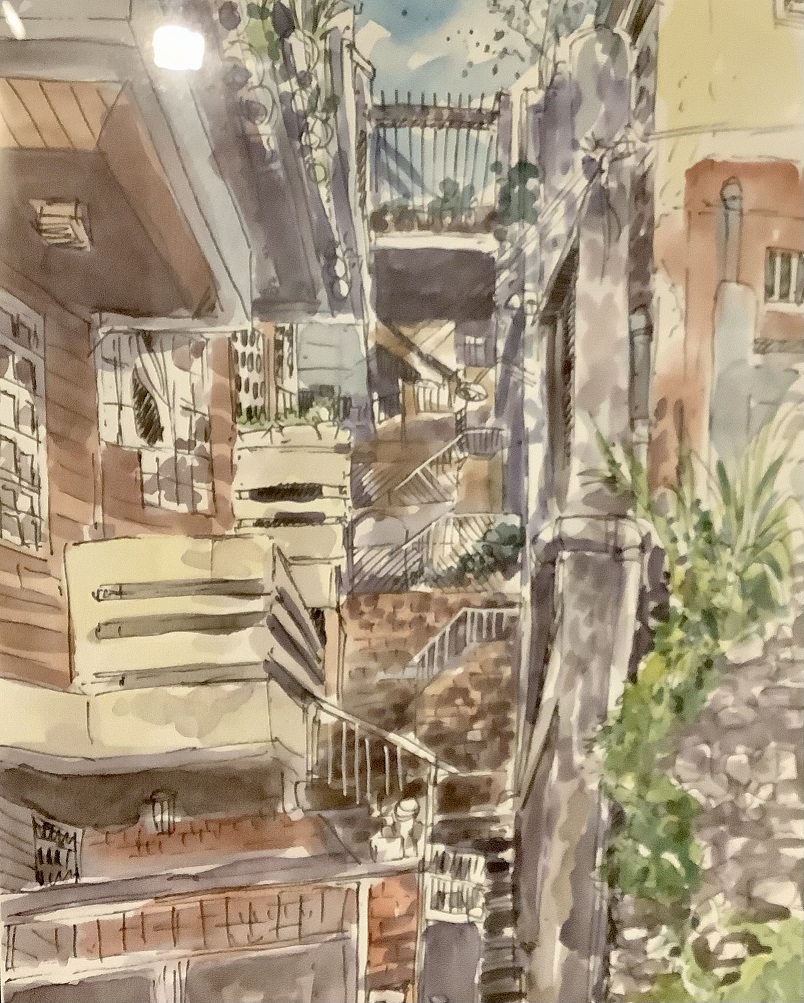
His “In Aurora Hill,” for instance, depicts the vertiginous, vertical construction of high-rises and their stairways—the scene could almost be straight out of a European or American urban-scape with a Tony and Maria emerging to sing the balcony scene in Westside Story.
The same goes for “Valenzuela,” after a street in Barangay Salud Mitra near downtown Baguio, where the eye movement steeply falls and concrete houses and buildings, even tarps, can be seen on both sides of the road. In the horizon is a splash of blue sky and surviving greens again to soothe the beholder.
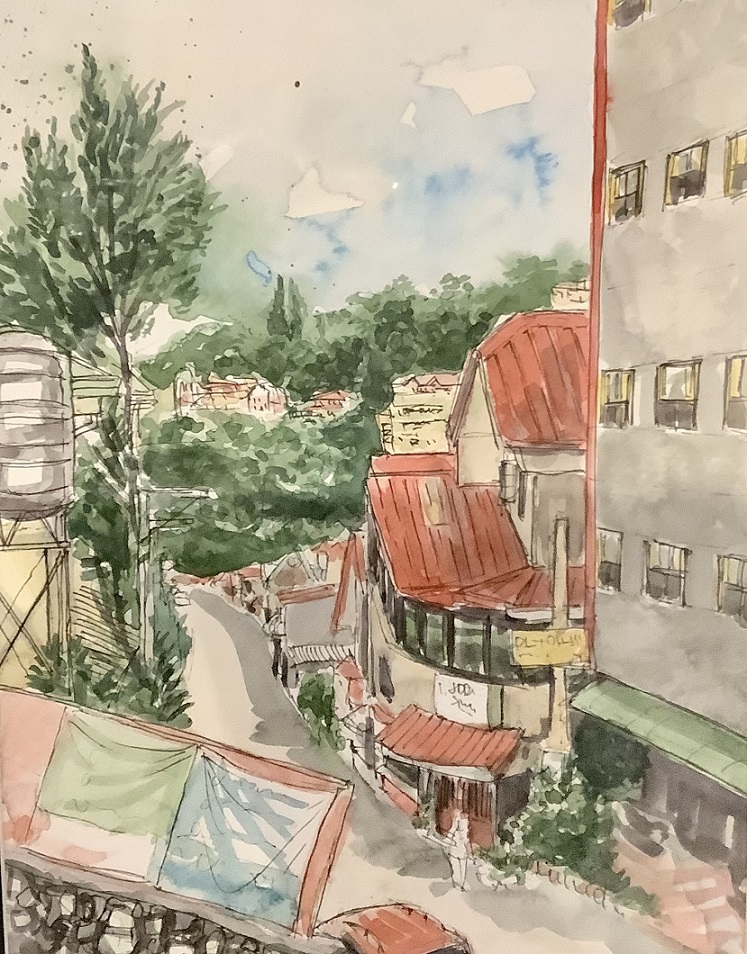
As far as the self-taught Castro can remember, he has been drawing since he was a child of seven born to “struggling parents in Project 6, Quezon City.” When his elders were either working or studying, they would leave him alone with pencil and paper, and he was able to occupy himself. He took informal lessons with artist friends, who were studying fine arts, studied how comics were made and learned from Bob Ross, an American painter, art instructor and television host of “The Joy of Painting.” He also read widely.
As for his background in architectural drawing, he said he didn’t have one “academically, but I learned the basics of it and perspective from reading and copying blueprints from architecture magazines.”
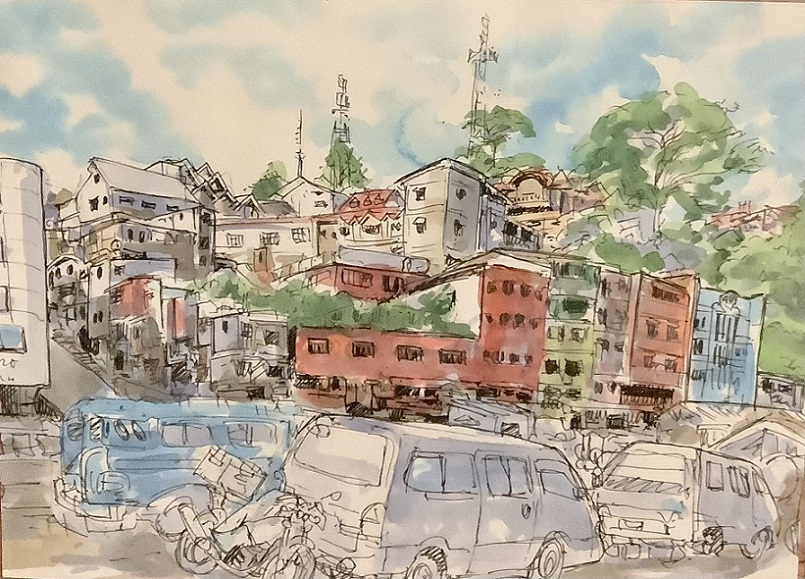
Witness his “Magsaysay Avenue” which, on the foreground, features cheek-by-jowl vehicles (jeepneys, vans, motorcycles)—one imagines the smog of diesel filling the air. In the back are buildings going up an inclined street and in the distance, communication towers vying with trees in their height. If that isn’t skilled architectural drawing, one doesn’t know what it is.
Castro is also a human character reader as borne by paintings such as “Where People Meet: Luisa’s Café,” “Volante Cowboy Blues” and “Ride and Text.”
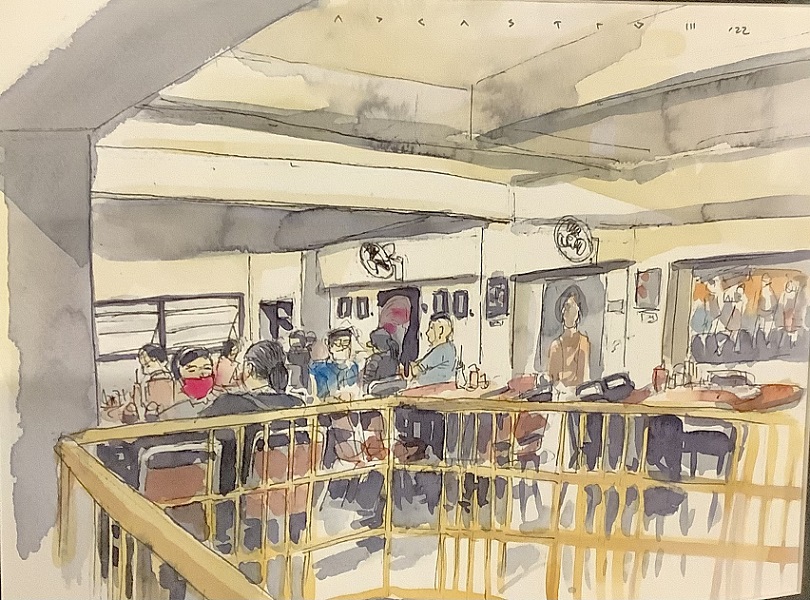
In the first, he shows habitués of Luisa’s Café, where Baguio’s media persons regularly meet, in conversation, with one wearing a pink mask, over what must be bottles of beer. In the second, set in the homegrown pizza and pasta place in the lobby of the once iconic Session Theater, people, including a Benguet cowboy, are shown chatting or huddled over a meal with passersby on the sidewalk visible at right. The green board where the menu is scrawled is also there, a defining characteristic of Volante.
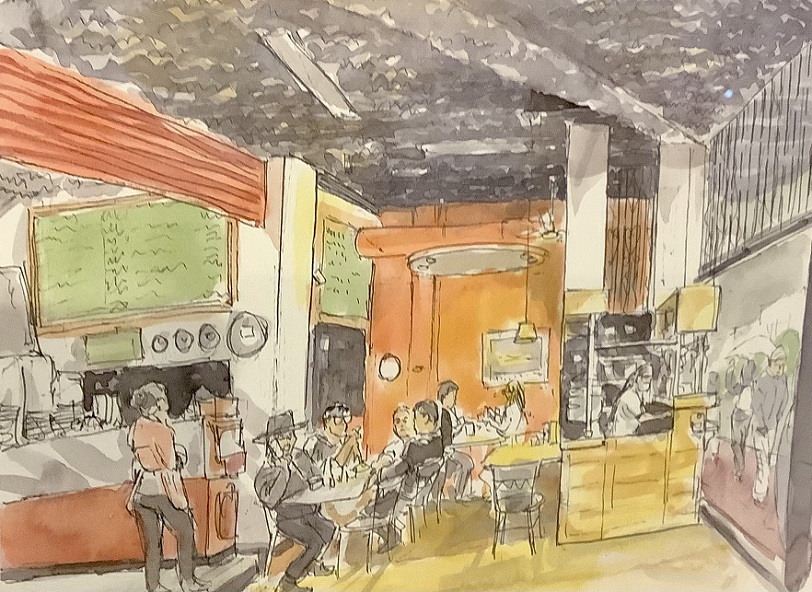
The third painting reveals how focused people are on their mobile phones that they no longer pay attention to the passengers beside them or look up if they have reached their destination.
Asked why Baguio remains close to his heart despite its overpopulation, dense housing and heavy traffic in the central business area, Castro answered, “When my older cousin migrated to Baguio, I would sometimes visit him in the Nineties. I’ve always been fascinated with how structures melded with the natural landscape. Baguio may be dense and overpopulated, but if you’re from Metro Manila, anywhere outside it is pleasant.”
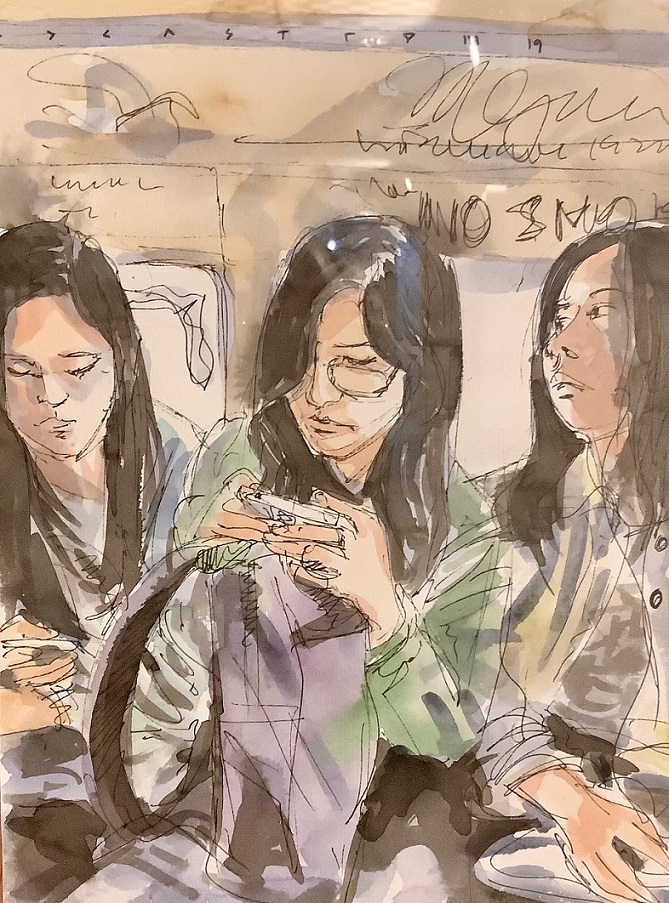
He can’t pinpoint a favorite Baguio spot yet, saying: “The truth is, I haven’t explored the whole of Baguio to have a favorite. Even the backstreets are interesting visually!”
The exhibit runs until Oct. 31 at the Baguio Convention Center on Gov. Pack Road.
